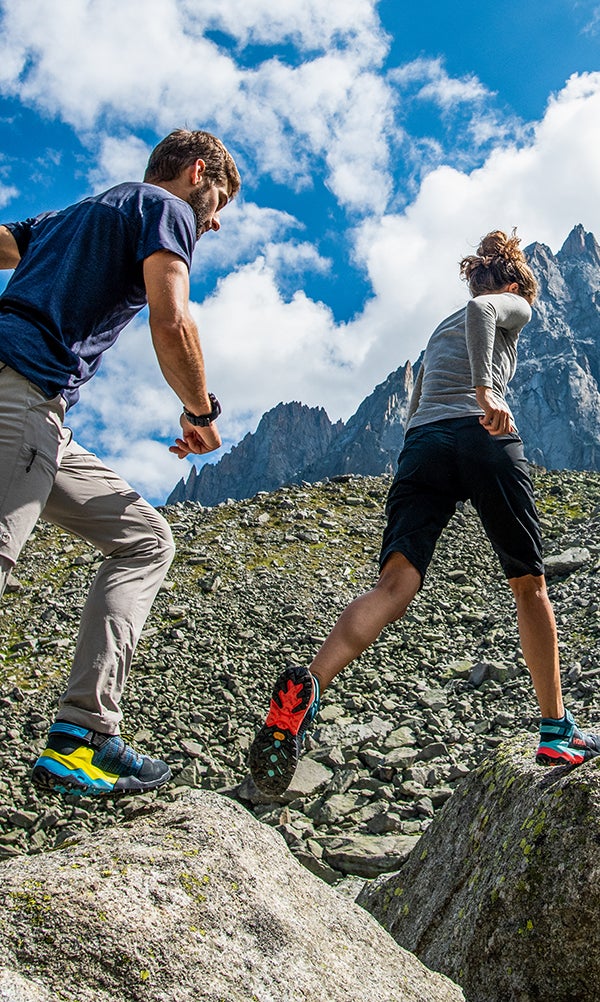Summiting a mellow fourteener like Colorado’s Mount Elbert, the state’s highest peak, is plenty rewarding for most hikers. But some long to venture where only mountain goats dare to tread—along airy knife ridges and up near-vertical summit routes. If you’re ready to graduate from meandering switchbacks and grassy slopes, here’s how to take your hiking from typical to technical.
Learn the Scale
Just like climbing routes and whitewater rapids, hiking trails have a difficulty rating system, too. Though you might not have known it at the time, you’ve hiked tons of Class 1 and Class 2 trails, which span from gradual and well maintained to a bit steeper (10- to 20-degree pitches) and more rugged. Class 3 routes—the ones you’re after now—require some technical skills, because they involve scrambling over boulders and up scree slopes, usually above tree line. The scale continues to Class 4, but these routes begin the transition to mountaineering and require rope skills, which are best learned through professional instruction. Class 5 routes are straight-up rock climbs.
Get the Gear
Getting into technical terrain also means making sure you’ve got the right equipment. Layering, especially in the alpine, where the weather can change in an instant, is a must. Choose synthetic or wool base layers and midlayers for insulation (even when wet) and always pack a good rain jacket or windbreaker, even if the weather looks clear.
The most important item for steep, technical hiking? Proper, comfortable footwear like the HOKA ONE ONE® , which combines the classic midsole comfort of the brand’s iconic running shoes with the traction of a more classic approach shoe. With its aggressive outsole, which is molded in sticky Vibram® Megagrip rubber, climbing-shoe inspired laces, and adjustable heel strap for extra lockdown and stability, the Arkali is purpose-built to inspire confidence when scrambling in technical terrain. In other words: it’s precisely the shoe you want when you find yourself presented with a boulder field that you need to safely traverse.
Build Your Skills
To make the leap from casual hiker to Class 3 hero, Dan Timbrell, a veteran mountain guide in Estes Park, Colorado, recommends a slow but steady progression. Start by tackling some Class 1 routes that go above tree line to get used to the terrain and the potentially rapid changes in weather. And make sure to get an early start, says Timbrell, to limit your risk of encountering nasty weather in the exposed alpine.
Next, it’s time to learn your tolerance for exposure. “People stare at the exposed spot and their muscles get tight and their breathing gets short,” says Timbrell. “Look five feet ahead and focus on something besides the drop-off.” Practice by finding a route with some relatively safe drop-offs and traverse them, keeping three points of contact with the ground at all times.
Finally, remember that there’s no shame in asking for help. Look into hiring a , like Timbrell, or enlisting an experienced friend when it comes time to tackle your first technical peak.
The heralds a new breed of hiking shoe. There’s off-road, off-trail and then there’s off the map. HOKA ONE ONE® has just gone vertical with the Arkali. A combination of running shoe innovation, climbing shoe technology, and hiking boot engineering, the Arkali is ready for anything.

